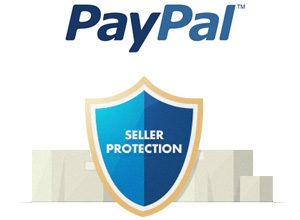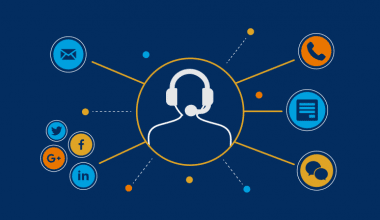Every thriving firm depends on its customers. The same is true for leaders with followers and for a nation with its people. For businesses, it works similarly. Tools for managing client relationships are the precise answer to customer issues. Although not understanding what it is might be a major disadvantage. In this article, we discuss examples and processes of customer relationship management tools and techniques. Additionally, we mention free customer relationship management tools you can use that are worthwhile.
What is a Customer Relationship Management?
Customer relationship management (CRM) is a method that allows businesses and other organizations to manage their contacts with customers by studying vast volumes of data and employing data analysis in most cases. Since the early 1990s, there has been a focus on customer relationships.
Furthermore, customer relationship management is a corporate approach that involves organizing around customer segments and encouraging customer-satisfying behavior. It also involves implementing customer-centric processes that maximize profitability, revenue, and customer satisfaction.
CRM can apply to past, present, or prospective clients. Customer relationship management also refers to the ideas, methods, and regulations that a business adheres to when speaking with its customers. This whole connection includes all aspects of a company’s direct interaction with customers, including operations relating to sales and customer service, forecasting, and the examination of consumer trends and habits. In 2020, Gartner projects that the global CRM market will be worth $69 billion.
Customer Relationship Management Tools
Customer Relationship Management tools also enable you to use techniques to
- store customer and prospect contact information,
- discover sales possibilities
- track service issues, and
- manage marketing campaigns.
In fact, it makes data about every customer encounter accessible to anybody at your firm who might need it.
The goal of customer relationship management tools is to speed up and simplify the customer management process. It also aids companies in managing and tracking customer interactions as well as keeping track of communications with both potential and current clients. So, we provide a list of examples of customer relationship management tools and techniques you can use in implementing them.
What Are Customer Relationship Management Tools Used For?
Everyone has access to a better way to manage the external contacts and relationships that are essential to success thanks to customer relationship management tools. However, you can utilize these powerful tools irrespective of your field, which includes work in sales, customer support, business development, recruiting, marketing, or any other area of the company. Moreover, You can also make data about each customer interaction accessible to anyone at your company who might require it.
Data visibility and accessibility make it simpler to cooperate and boost productivity. Everyone working for your organization has access to information about customers’ communications, purchases, most recent purchases, payments, and much more. A small firm, whose teams frequently need to find ways to do more with less, can benefit particularly from CRM since it can help businesses of all sizes accelerate business growth.
Examples of Customer Relationship Management Tools
#1. Hubspot
Examples of customer relationship management tools include Hubspot. HubSpot offers free customer relationship management tools. It is an excellent platform for companies or anyone interested in learning more about CRM technologies.
- You can also contact prospects via Live chat or email,
- Manage your sales pipeline,
- keep track of customer interactions via email, social media, and phone calls
with the aid of HubSpot CRM.
HubSpot CRM is free for up to a million contacts. However, you can upgrade to further marketing, sales, and customer service packages as your business expands, or you can link the tool with other third-party solutions.
#2. EngageBay
Lead generation, email marketing, marketing automation, and social media engagement are all examples of customer relationship management features included in EngageBay’s all-inclusive marketing tools.
Furthermore, EngageBay tools enable users to build email campaigns and automate marketing procedures and sales funnels. It was also created to assist organizations in acquiring, engaging, nurturing, and closing leads. Besides, the cloud-based platform may be used to increase leads, create and automate the delivery of email marketing content, and manage client relationships using the integrated CRM.
#3. Salesflare
Startups and small enterprises adore using Salesflare CRM. A zero-input sales pipeline tool, it acts and thinks in the user’s best interests rather than the other way around. Salesflare populates your address book and records all communications with those you are in contact with.
It also gives you automatic client timelines that provide all the information you require by pulling data from social media, business databases, phone, email, and calendars. Salesflare will instruct and remind you what to do about leads.
You have complete control over your sales funnel thanks to comprehensive insights and visual pipelines. When Salesflare, an intuitive and simple-to-use tool, transforms complexity into simplicity so you can convert leads into clients.
#4. Salesforce
One of the examples of customer relationship management tools provided by Salesforce is the Salesforce Sales Cloud. The Customer Relationship Management tools manage every step of the purchasing process. And they also provide features including account and contact administration, opportunity management, lead management, user-friendly workflows, information sharing, and sales
Moreover, with the help of mobile CRM, business owners and salespeople can manage their sales efforts on the road.
For $25 per user each month, beginners can choose the Salesforce Essential plan. Users can purchase add-ons like Pardot, Salesforce’s marketing automation platform, and Sales Cloud Einstein, Salesforce’s AI product, for an extra monthly subscription charge.
#5. Zoho
One of the examples of many tools in Zoho’s comprehensive business package is Zoho Customer Relationship Management.
Both SMBs and large-scale enterprises can benefit from the capabilities that CRM has to offer. The Customer Relationship Management solution includes tools such as process management, marketing automation, pipeline management, and sales automation. Moreover, with the help of a single interface, you may communicate with your leads on many platforms.
Businesses may discover patterns, forecast sales, and perform data enrichment tasks with the aid of Zia-AI Zohu’s bot. With Zoho CRM, businesses can get started for as little as $18 a month and upgrade as needed. However, Zoho also offers a free version of its customer relationship management tools.
#6. Pipedrive
Pipedrive includes examples of customer relationship management tools. Teams of all sizes adore using Pipedrive, a customer relationship management platform that focuses on sales.
Moreover, our CRM’s straightforward yet effective design, which places a premium on usability, attracts sales teams and has 100,000+ paying clients spread over 179 countries. Nothing slips through the cracks with Pipedrive, allowing your team to spend more time selling instead of filing with an agile and robust CRM system.
#7. Freshworks
For companies of all sizes, Freshworks creates software that is absurdly simple to use, making it simple for them to please both their staff and their customers.
Freshworks also provides a better customer and employee experience because it is affordable. It is also quick to adopt, and user-centered . Freshworks, with its headquarters in San Mateo, California, has a committed staff working from 13 sites across the world to service customers like Bridgestone, Chargebee, DeliveryHero, ITV, Klarna, Multichoice, OfficeMax, TaylorMade, and Vice Media.
Free Customer Relationship Management Tools
#1. Agile
Agile is a customer relationship management platform that provides free tools. Contact management, sales enablement, marketing automation, and customer support are features in Agile.
It is software that allows businesses of all sizes to optimize their efficiency and customer relationships. Moreover, for small businesses with limited employees, it allows them to run multiple campaigns successfully and manage their time efficiently. It also makes it easier and more organized for larger organizations to connect with each of their customers in a highly personalized way.
#2. Bitrix24
All-inclusive management, collaboration, and communication toolkits are provided by Bitrix24.
for all of your files, projects, communications, tasks, and contacts. Bitrix24 provides you with a single platform. Creating an account, inviting your coworkers, and using the site are all quite simple. Each member of your team may successfully collaborate to advance the project by keeping track of tasks in the Activity Stream. It also offers free customer relationship management tools.
Its primary solutions consist of social networking, tasks and projects, CRM, document management, file sharing, calendars and planning, management of sales teams, emails, phone calls, and HR management. because of its mobile solution, you can use it on your Android, iPhone, or iPad smartphone or tablet. Small and medium-sized businesses can use Bitrix24. It also fits distant teams that want to keep in touch and collaborate efficiently.
#3. Insightly
With the aid of customer relationship management and project management tools, Insightly manages projects for free to businesses. Moreover, It enables small and medium-sized enterprises to manage contacts, follow up on relationships, keep track of the sales pipeline, plan projects, and more. It preserves all of your vital business data on all of your devices, allowing your organization to sell more products and provide better customer service.
#4. Capsule
You can easily manage all your contacts and also add tasks associated with your contacts and store all your communication history alongside the contact with capsule.
The Capsule is an easy-to-use customer relationship management system that also offers free tools with its process. They help businesses manage their sales and build relationships. Moreover, Capsule works alongside other services which include Mailchimp, Google Apps, Gmail, Xero, Freshbooks, Zapier, and more to give you the best experience.
Numerous sales solutions are available in Capsule CRM to help you expand and improve your sales pipeline. Your conversions, milestones, predictions, and other information are tracked on the pipeline dashboard.
It features a drag-and-drop editor, a Kanban visual pipeline, and multi-currency compatibility. The sales tool also has a filtering option that allows you to sort your leads or clients according to tags, milestones, status, and many other criteria.
#5. Freshsales
Freshsales is a cloud-based customer relationship management (CRM) solution that helps businesses across different industry verticals to manage their interactions with existing and potential customers.
One-click phone, sales lead tracking, sales management, event tracking, and more. Users can also send personalized bulk emails from the solution, and then monitor activity on these emails. The inbox automatically prioritizes emails from contacts and leads that are waiting for a response.
Freshsales (formerly Freshworks CRM) is a free Customer Relationship Management tool with a key difference.
What’s the best free CRM software?
The best free CRM software includes
- Freshworks CRM.
- Agile CRM
- HubSpot CRM
- Zoho
Customer Relationship Management (CRM) Tools and Techniques
#1. Contact Management
Contact management is the process of maintaining and monitoring customer and lead information.
Investing in contract management can help you expand and diversify your customer base, in addition to giving you easy access to customer data.
Upgrading to customer relationship management tools might give you sophisticated data and techniques that enable you to improve clients.
Keeping track of every customer’s name and unique preferences can be challenging in the fast-paced corporate world of today. Data must be stored electronically to effectively communicate with clients and consumers.
Customer and lead data can be entered for storage, easy access, editing, and tracking using contact management. An Excel spreadsheet can be used for contact management, although CRM software can be more sophisticated.
You may provide your staff with vital client information by digitizing contact management. Making communication more effective can allow you to concentrate more on your clients and less on business-related chores.
In the current business climate, personalizing a sales email with the recipient’s name is no longer sufficient to close a deal. Customers are loyal to businesses that keep track of their individual preferences and demand a top-notch experience each time they place an order online or receive a product in the mail. Going above and above not only generates repeat business but also promotes recommendations, which may drastically lower your entire client acquisition costs.
#2. Lead Management.
Getting and organizing lead information and controlling communications with them are two steps in the lead management techniques and tools. It involves gathering leads from a variety of sources, certifying them, and giving them to sales representatives. It also entails tracking and documenting online and offline interactions, including emails, phone calls, website visits, ad clicks, and in-person meetings.
Understanding the needs and pain points of customers is made easier for businesses through lead management. By doing this, they can then suggest a solution that will meet the needs of their clients. Experts say 47% of buyers are more likely to patronize a seller that is aware of their needs.
Lead management is the practice of gathering and managing leads (possible consumers) up until they complete a purchase. This is a more extensive process than traditional advertising, and it works best for e-commerce businesses that build individualized relationships with their customers.
Lead nurturing, a distinct phase of lead management that occurs at the end of the process, should not be confused with lead management.
#3. Pipeline Management.
The practice of monitoring and guiding potential future sales at various stages is pipeline management. This is one of the techniques in the majority of customer relationship management tools.
CRM managers can respond to a number of significant queries thanks to pipeline management.
- They can accurately forecast future sales thanks to it.
- Aids in the analysis of the sales process and the discovery of weak points.
- It might notify a sales manager of a potential sales slowdown or rise.
- It displays the average conversion rate from leads to paying customers, or aggregate sales velocity.
Multiple pipelines can be managed by advanced CRM software. Imagine you own a car dealership where you generate revenue through the sale of vehicles, auto parts, and repairs. In the event that you only have one pipeline (new car sales or repairs), you won’t be able to accurately forecast accurately track and analyze multiple lines of business and profit centers.
#4. Sales Automation.
Sales automation, unlike other customer relationship management tools and techniques, is used to get rid of manual, repetitive chores and automate them so that you and your sales team can concentrate more on completing deals and getting paid.
With the aid of sales automation solutions, you can:
- Automate the process of following up.
- Control your sales pipeline.
- Using a repeatable and scalable methodology, you can quickly train new sales team members.
- To avoid embarrassing encounters, send invoices and payment reminders to your clients.
It is becoming a more potent instrument that helps you increase your productivity while expanding your business. Sales automation is the mechanization of manual, time-consuming sales tasks using software, artificial intelligence (AI), and other digital tools. It aims to manage or own responsibilities that sales reps and managers do on a daily, weekly, or monthly basis.
Sales Forecasting.
Sales forecasting is a technique that involves estimating future revenue by predicting the amount of product or services a sales unit (which can be an individual salesperson, a sales team, or a company) will sell in the next week, month, quarter, or year.
Moreover, Producing an accurate sales forecast is vital to business success. Hiring, payroll, compensation, inventory management, and marketing all depend on it. However, public companies can quickly lose credibility if they miss a forecast.
Forecasting goes hand-in-hand with sales pipeline management. Furthermore, getting an accurate picture of qualification, engagement, and velocity for each deal helps sales reps and managers provide data for a reliable sales forecast.
A forecast is different than sales targets, which are the sales an enterprise hopes to achieve. Besides, a sales forecast uses a variety of data points to provide an accurate prediction of future sales performance.
At its simplest, a sales forecast is a projected measure of how a market will respond to a company’s go-to-market efforts.
#5. File Storage and Sharing.
File storage is a customer relationship management system. It is a technique for storing data in the cloud that gives servers and programs access to the data using shared file systems. Because of this compatibility, cloud file storage is perfect for workloads that depend on shared file systems because it enables straightforward integration without requiring code changes.
Data is stored in files, also known as file-level or file-based storage, in a hierarchical structure. The data is saved in files and directories, and it is provided to the system that stores it and the system that retrieves it in the same manner.
#6. Email Management.
Email management is a methodical strategy to maximize the effectiveness of email activities and minimize the detrimental effects that email handling can have on a person’s productivity and job happiness.
The only thing left to do for email management is to take emails off of a server and save them to a repository. But to do it right, each one needs to be categorized, and preserved, and may be deleted in a way that is compatible with existing corporate norms and standards, just like it should be done for all other types of documents and records. In email management, the number and quality of electronic messages transmitted inside an organization and received by that organization are systematically regulated.
#7. Reporting and Analytics
Google Analytics is one of the most commonly used applications in business today. As useful as it is, it’s not actually an analytical tool; it’s a reporting tool. Here’s the difference between reporting and analytics.
Reporting is the customer relationship management technique of taking already-existing information and making it comprehensible and user-friendly. This frequently entails extracting data from other sources, such as Google Analytics, or presenting the data in a novel manner. In addition, it is about obtaining reconciliation and ensuring its accuracy because the business counts on the reliability of those figures to make a choice.
Meanwhile, analytics is about providing value or creating new data to help inform a choice. Whether through an automated process or a manual analysis. In contrast to reporting, analytics is about ambiguity; you utilize it when you’re unsure of how to arrive at a sound conclusion. However, this could be due to the complexity of the issue or the difficulty of a challenge that isn’t well-defined, or because it’s a situation that changes frequently so the answer you got yesterday is unlikely to help you today.
Customer Relationship Management Process
The Customer Relationship Management process is a process to follow that ensures keeping every customer interaction personalized and meaningful.
#1. Acquiring customers
This lead acquisition is a customer relationship management process. It may fall under the purview of the marketing team, the sales team, or both, depending on how your firm is set up. For instance, your marketing team might use a CTA for newsletter registration or a social network promotion to persuade website users to contribute their email addresses. Live chat on your website can instead be set up by sales using their CRM system. With the help of this process, your staff can actively contact potential clients who visit your website.
#2. Convert leads into customers.
Your leads are intrigued because you engaged them successfully. However, it is now time to convert those leads into paying clients. This is a customer relationship management process.
In order to do this, sales representatives must first be adept at assessing the level of interest of leads and, more precisely, if they are interested enough to make a purchase. Here, a CRM system comes in quite handy.
Lead-qualification criteria can be determined using historical data from prior profitable sales. Moreover, to assist representatives in finding possibilities with the highest likelihood of closing a deal, these criteria can be added as “attributes” to your CRM’s lead-scoring tool.
Leads must be able to be nurtured further and gain the potential customer’s confidence in order for them to convert if they appear to be likely to make a purchase. Reps can do this by sending lead cases as one method. case studies, white papers, and other resources that may sway their decision.
#3. Provide superior customer service.
When you are successful in turning a lead into a customer, it is not over. Because even once a consumer converts, the customer relationship management process is still ongoing. However, Retaining consumers is essential for business expansion.
According to Zendesk’s 2020 Customer service is the most important aspect of determining a consumer’s loyalty to a brand. In contrast, providing subpar customer service can cost you clients and have a detrimental effect on your reputation. When, where, and however their clients expect it, support personnel must be able to provide outstanding help.
Customers believe that being able to address their problems quickly is the most crucial component of receiving good customer service (49%). Support staff can quickly, with the aid of CRM solutions easily access the historical customer information they need to resolve a ticket quickly.
Fifty-seven percent of customers expect to have a choice of channels when reaching out to customer support. However, support agents can not only provide omnichannel support but also manage those conversations in a single, unified view.
#4. Lifetime customer
In our minds, a returning client is someone who frequently patronizes the same store to purchase goods they are familiar with and enjoy. Existing customers can also contribute significantly by upgrading to more expensive products. This is a customer relationship management process.
How can you persuade customers to change products? Personalized email recommendations are a fantastic place to start. Based on comparable purchase histories, you may utilize your CRM to group clients into smart lists. Then you can develop unique email templates that allow you to simultaneously communicate relevant product releases to large client lists. By doing this, you can be certain that the special offers or releases you send are getting to the customers who are most inclined to buy them.
You might also discover upsell opportunities through check-in calls if your company provides services. Create reminders in your CRM to routinely contact returning customers to check in and see if there is anything you can do to enhance their experience. Because It’s possible that since you had an interaction with them, their needs have changed, and they are now prepared for an upsell.
CRM Tools Example
As shown in the examples of customer relationship management tools below, these tools are classified according to the process and techniques you intend to use them.
- Inbound CRM: HubSpot CRM
- General CRM: Salesforce CRM
- Fully Integrated CRM: Freshworks CRM
- Operational CRM: NetSuite CRM
- Sales CRM: Pipedrive
What Is the Best Tool for CRM?
Here are several famous CRM tools like
- Salesforce CRM,
- SAP CRM, Zoho CRM,
- Oracle CRM,
- Microsoft Dynamics CRM,
- Sugar CRM, and Nimble CRM.
- Hub spot CRM,
- PIPEDRIVE CRM,
- CRM Creation
What Are the 3 Key Types of CRM Systems?
- Collaborative CRM systems
- Operational CRM systems
- Analytical CRM systems
What are the Four types of CRM?
#1. Strategic CRM
This is the fundamental customer-centric company approach meant to attract and retain clients. It focuses on developing a customer-centric business culture that is committed to attracting and retaining consumers by producing and delivering value superior to that of rivals.
#2. Operational CRM
They streamline commercial operations that involve customers. It makes it possible to automate and combine marketing, sales, and service functions. These functions also include marketing automation, sales force automation, and service automation.
#3. Analytical CRM
In order to increase both customer and customer value, this is concerned with collecting, storing, extracting, integrating, disseminating, using, and reporting customer-related data.
#4. Collaborative CRM
When you integrate the customer interaction data to increase customer satisfaction and loyalty for maximized profitability and revenue.
What Are the 4 Components of CRM?
- Marketing
- Lead Management
- Sales Automation
- Workflow Automation
Conclusion
Customer relationship management tools and techniques compile information from a variety of communication channels. They include the company’s website, phone, email, live chat, marketing materials, and more recently, social media. They also give businesses the opportunity to discover more about their target markets and how to best meet their needs, retain customers, and boost sales.
FAQs
Who is a customer?
A client is a person who purchases goods, services, or ideas from a seller, vendor, or supplier in exchange for money or another useful consideration. This definition applies to sales, commerce, and economics.
What are the four stages of CRM?
The CRM cycle basically consists of four stages – Marketing, Sales, Product, and Support.
Which is a popular collaborative CRM?
Our overall winner for the best collaborative CRM was Zoho CRM, which took first place in the Collaborative Features category and also tied for first in the Expert Score and Pricing categories
References
Related Articles
- HOW TO CHOOSE THE RIGHT REAL ESTATE CRM AS A REALTOR
- CUSTOMER RELATIONSHIP MANAGEMENT (CRM): Definition, Tools, and Importance
- SALES CRM: Definition & Top Best 15+ Sales CRM Software (Free & Paid)
- How To Start a Real Estate Business: Step-by-step Beginners Guide
- ONLINE CRM: Best Small Business Online System Software in 2023 (Free & Paid)
- SENTIMENT ANALYSIS: Meaning, Examples, Tools & What You Should Know






